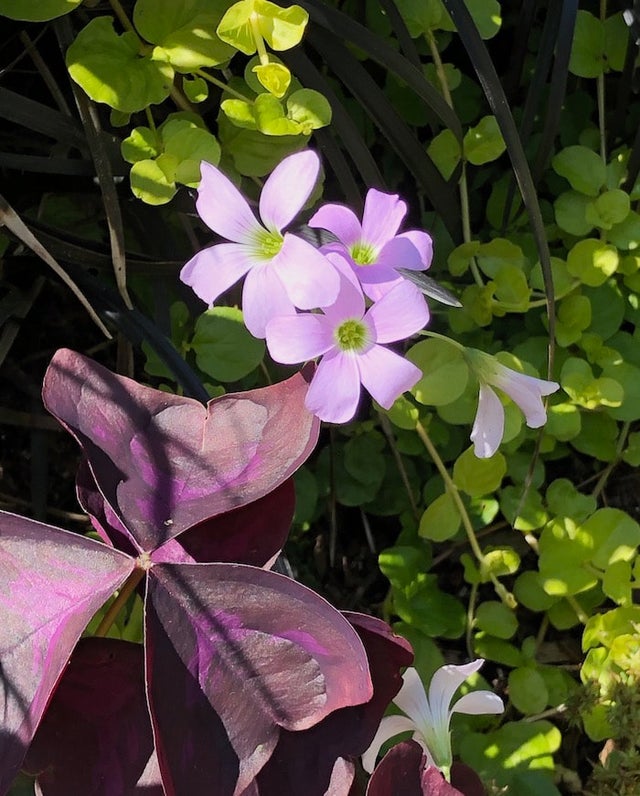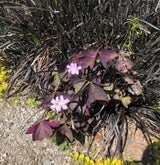- In the Garden
- >
- Gardens
- >
- Gardens A-D
- >
- Black Garden
- >
- Oxalis triangularis
Oxalis triangularis
Common name: False Shamrock
Oxalis triangularis is a low-growing perennial in the wood sorrel family (Oxilidaceae). It is native to the southern parts of South America from Brazil down to Argentina. It can be used as a border plant or an accent plant, and can give a pop of colour to the garden. It is also popular as a house plant.
O. triangularis has dark purple, clover-like leaves. Each leaf consists of three leaflets each triangular in shape. The flowers which are pale pink and star-like in appearance bloom from late spring into summer. O. triangularis has interesting behaviour. It is highly photonastic. Both the leaves and the flowers open and close in response to light, dark, and even changing weather, opening when light levels are high (in the day) and closing when light levels are low (at night). O. triangularis leaves and flowers are edible, but should only be eaten in moderation due to their oxalic acid content. The corms are also edible.
The common name for O. triangularis is False Shamrock, but unlike true shamrocks which have a fibrous root system, O. triangularis has a tuberous root system (small pinecone-like corms). The genus name Oxalis is derived from the Greek word 'oxus' and means 'acid' referring to the acidic taste of the leaves.
Oxalis triangularis was first described in 1825 by French botanist Augustin Saint-Hilaire.
The photos were taken in the Black and Gold Garden in the summer of 2022. It was a warm, dry summer.
Text and photos by Kumi Sutcliffe




